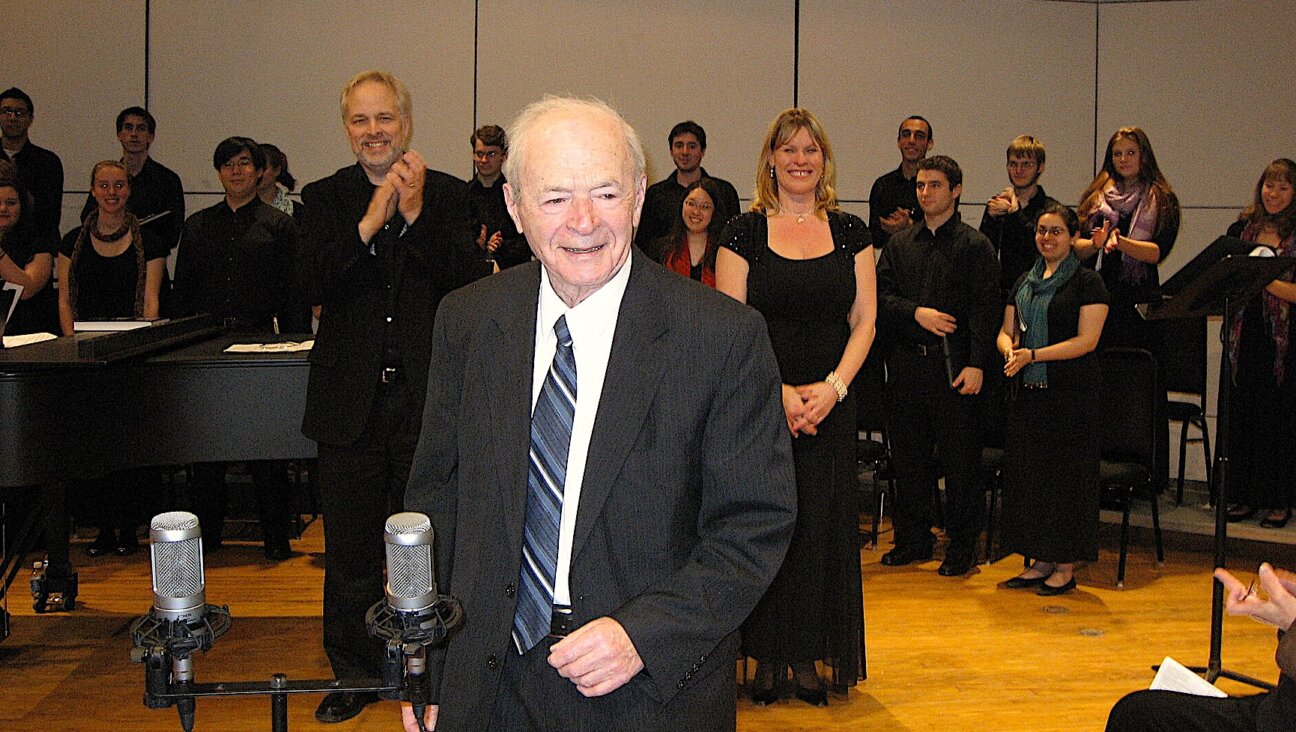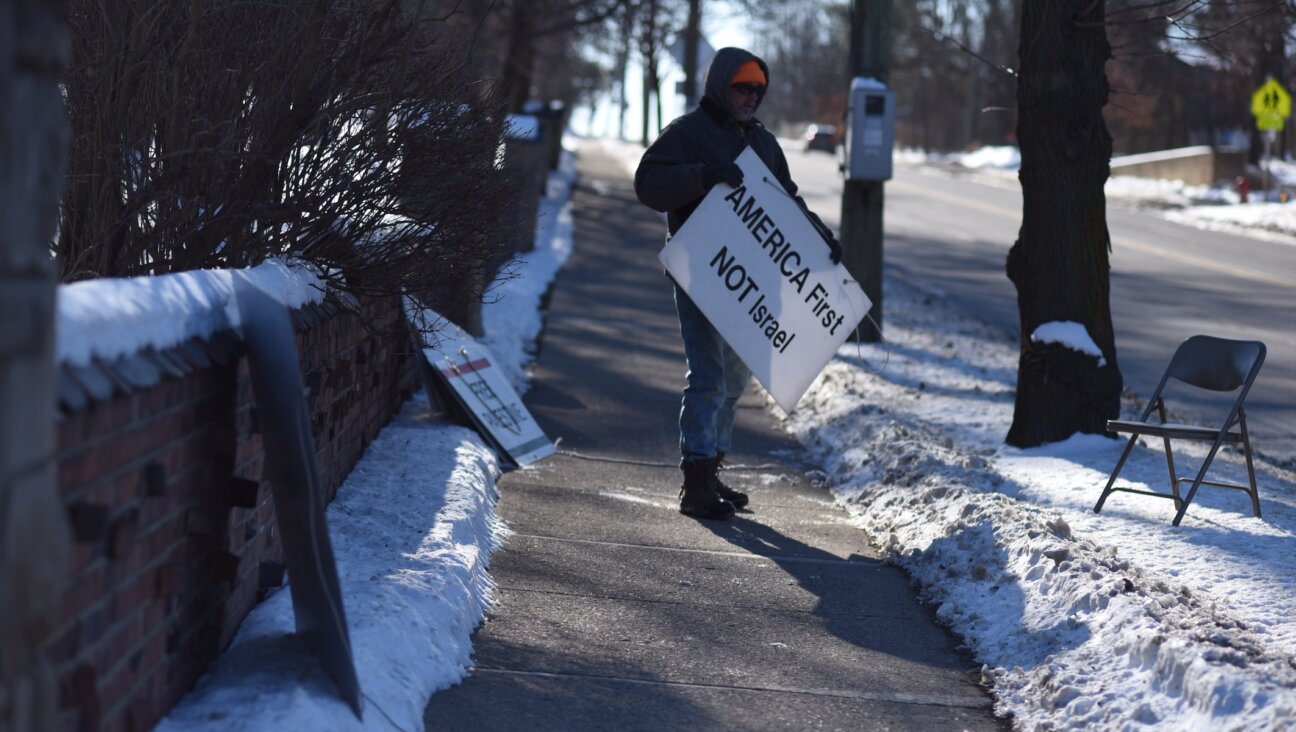Was Smoke on the Shavuot Mountain a Sign Ancient Jews Used Marijuana?

Graphic by Angelie Zaslavsky

Image by Pixibay
The upcoming festival of Shavuot, which means “weeks,” marks the end of a seven-week period that begins during Passover, and the receiving of the Torah under a cloud of smoke at Mount Sinai.
“And all the people saw the thunder and lightning, and the sound of the shofar, and the mountain in smoke; when the people saw it, they became uneasy and stood far away” (Ex. 20:15)
“According to an interpretation of Exodus 19:18, on Shavuot, Mount Sinai began to burn and smoke,” said Orthodox Jewish geriatrician Yosef Glassman.
What kind of smoke is the question.
Shemot 34:3 explains, “at the time of the Revelation at Sinai, G-d warned the people not to allow their cattle to graze on the mountain, indicating that it was full of pasture,” said Glassman, who strongly suspects that some, or maybe all of it may have been cannabis.
That smoke, coupled with the mountain’s green and, according to Glassman, possibly sacred vegetation, marked a revelation of oneness among the Hebrews.
“At that time, Jews received the secret of future world unity,” he continued. It was not revelation “under the influence,” he clarifies, but rather, “the smoke of the holy herb growing on Sinai was a conduit through which to communicate with them.”
Glassman, 45, a former IDF lieutenant and combat physician in Israel’s Golani Brigade, holds medical licenses in Massachusetts and Israel. He is a former instructor at Tufts and Harvard Medical Schools, and holds advanced fellowships in medicine from Johns Hopkins University, Tufts and Harvard Medical Schools.
But his passion and conviction lie in uncovering biblical references that corroborate the safety, efficacy, and indeed, the sacredness of cannabis, which he deems “the holy herb.”

Image by RAUL ARBOLEDA / Getty Images
The secular world, he contends, also holds cannabis to another realm. Despite a record that is safer than aspirin and acetaminophen, its regulation and distribution systems are unlike that of other medicinal substances.
For the past few years, Glassman has shown his groundbreaking presentation on the biblical roots of medical marijuana, “Medical Cannabis: From the Bible to Boston,” at hospitals, academic and public sites including Beth Israel Deaconess Medical Center, Boston University, libraries and conference rooms. He will speak in Jerusalem and Safed, Israel in 2016.
People would first attend out of curiosity, and perchance hoping for samples. But things have quickly changed. Medicinal marijuana is now legal in 24 states. 11 other states sanction only CBD, the non-psychoactive ingredient cannabidiol. In Alaska, Colorado, Oregon, Washington and the District of Columbia, recreational use is now legal. Thus far, 20 states plan to include initiatives on the 2016 election ballot.
Within the past year, cannabis has been declared not only kosher by the OU, but kosher for Passover.

Israeli Jews Enjoying Lag B’Omer. Image by MENAHEM KAHANA / Getty Images
The American Cancer Society supports more research on cannabinoids.
Patients can obtain strains that include Kosher Kush (for pain, stress, insomnia, depression and lack of appetite) and Kosher Tangie (for stress, depression, pain, fatigue and insomnia) at dispensaries. Can ruggelah edibles be far behind?
If so, remember to floss and rubber tip. The results of a groundbreaking study released this month that followed 1,037 marijuana users in New Zealand from birth to middle age found no correlation with any physical problems, save for gum disease.
Like the ancient Hebrews at Mount Sinai, Glassman, too, had a revelation on Shavuot in 2013. At his Chabad in Newton Centre, Massachusetts, he was moved to prepare a 3 a.m. talk on biblical marijuana when congregants joked about the state’s recent ratification of medical marijuana. He recalled a bookmark he had placed in a copy of the Shulchan Aruch, held to be the code of Jewish Law, where he had read: “Also, one will beautify [Shabbat candle lighting] when the wick is made from cotton, flax or cannabis….”
Glassman, a native of Sharon, Massachusetts, was gravitating toward a deeper practice of Judaism, and was also a big fan of reggae music. Rastafarians, he knew, believe they are descended from the Israelites, and that they were originally Ethiopians. Many, including the late Bob Marley, belong to The Twelve Tribes of Israel religious group, and ganja plays a huge role in their worship. Was there an undiscovered link?
Glassman started Googling Israeli sites in Hebrew and explored the Talmud, locating this passage: “If one’s field was sown with cannabis or lof [Solomon’s lily], one must not sow on top of them, since they produce crops only after three years.” From there, his search uncovered many more mentions, some cryptically referring to “kene bosum,” which can have slightly variant spellings.

Bob Marley. Image by Keystone / Getty Images
Glassman also found references to medicinal cannabis administration, even by the Hebrew sage, rabbi and physician Maimonides, or the Rambam (1135-1204). “According to his writings, as both a physician and a rabbi, Maimonides prescribed cannabis oil for a variety of ear and respiratory conditions, including the common cold,” Glassman said.
“Maimonides paid special attention to cannabis in his magnum opus, the Mishneh Torah, a compendium of Torah law based on the Talmud that preceded the Shulchan Aruch,” Glassman added. “He mentioned that the plant cannot be planted back to back after vineyard produce; otherwise, one would face penalty, as the mixing of plants is prohibited in Jewish law.”
These citations, as well as medicinal evidence, emerging marijuana legislation, and groundbreaking cannabis research in Israel (where medical marijuana is legal, with research and application government-funded), became the basis for Glassman’s professional presentation.
Cannabis, he shows on screen, is one of the 50 fundamental herbs used in traditional Chinese medicine for 4700 years. Ancient Egyptians used it in suppositories, and for hemorrhoids and eye pain, while in Greece, wine was steeped in cannabis and administered for inflammation and ear problems.
The flowering plant genus cannabis includes two main species, sativa and indica. Glassman’s talk begins with the explanation that marijuana is a Mexican term that often refers to the leaves of this most enigmatic plant. Hemp is the stem that is made into ropes, clothing and accessories, while hashish is the concentrated resin. “Weed is defined as the product that helps most Americans learn the metric system,” he often jokes.
Glassman himself promotes medicinal marijuana treatment. “I have been a steady and consistent advocate of cannabis access for patients in need, particularly geriatric patients, which is my main target population, being a geriatrician,” he said. “I have recommended cannabis use for patients in their 90s, for various conditions including pulmonary fibrosis, agitated dementia and debilitating arthritis.”
In the Torah, Moses was instructed to “take for yourself herbs b’samim – herbs of medicinal quality,” and biblically-referenced ingredients of incense: frankincense, myrrh, cassia, spikenard, saffron, costus, aromatic bark, cinnamon, “and a small amount of smoke-raising herb,” referred to as “Keneh bosem” in Exodus 30:23 (“Take spices of the finest sort, pure myrrh, five hundred shekels, fragrant cinnamon, and Keneh bosem”). Keneh bosem is also cited in the Song of Songs 4:14, Isaiah 43:24, Jeremiah 6:20, and Ezekiel 27:19. In his 1981 book “The Living Torah” (Kaplan, 1981), Rabbi Aryeh Kaplan writes, “On the basis of cognate pronunciation and a Septuagint reading, some identify Keneh bosem with English and Greek cannabis, the hemp plant.”
Variant pronunciations include “calamus,” which Glassman said is used in herbal medicine today, and in Native American, Chinese and Aryuvedic medicine. The Aramaic “kene busma,” is, ironically enough, the name of a contemporary reggae musician.

Various strains of marijuana. Image by Justin Sullivan / Getty Images
According to the website cannabisculture.com, in 1936, Polish etymologist Sula Benet of the Institute of Anthropological Sciences in Warsaw first determined the evidence of the Hebrew use of cannabis.
“The word cannabis was generally thought to be of Scythian origin, but Benet showed that it has a much earlier origin in Semitic languages like Hebrew, and that it appears several times throughout the Old Testament,” the site states.
“Benet demonstrated that the word for cannabis is kaneh-bosm, also rendered in traditional Hebrew as kaneh or kannabus,” it continues. The root kan, the site explains, refers in this case to reed or hemp, while bosm means aromatic.
Glassman, who brings this research into modern technology, continues to uncover relevant biblical passages, such as one about an herb called “Maaleh Ashan” from Talmud Shekalim:
“Shimon ben Luga told me that once he and a young boy—a descendant of the Avtinas family—were gathering herbs in the fields. ‘I noticed that suddenly the boy wept, and then laughed. I asked him, ‘My boy, why do you cry?’ And he told me, ‘For my family’s honor, which has been diminished.’ ‘And why did you laugh?’ I asked him. ‘Because the greatest honor is reserved and established for the righteous in the future world. And in the end result, the Holy One will gladden his descendants, may it be speedily.’ I asked the boy, ‘What did you see that reminded you of all this?‘ And he told me, ‘As we were gathering, I saw the plant ma’aleh ashan (smoke-raising herb) before me in the field.’ ‘Show it to me!’ I exclaimed. But he told me, ‘We have a tradition never to show it to any man.’ Only a few days passed, and that child died. Thus he did not reveal it to anyone.” (Talmud, Tractate Yoma 38 a-b )
Kabbalist and physician Ramban (13th century philosopher Nahmanides, or Rabbi Moshe ben Nahman), Glassman says, suggests that there is evidence that this spice, called generically “Maalaeh Ashan [smoke raising herb],” was indeed Keneh bosem.
Glassman has not yet found a direct connection between Keneh bosem and cannabis in the Talmud. But he says much mystery remains.

Israelis smoking while celebrating Purim. Image by David Silverman / Getty Images
“It is evident that cannabis held importance in the Jewish world,” he explained. “It was used for clothing, specifically tzitzit (corner fringes), according to the Talmud, as it does not absorb ritual impurities. It was thus also used in Sabbath candle wicks” (Tosafos, Tractate Shabbat, Chapter 2).
Jewish texts are replete with commentary on cannabis’ agricultural guidelines, most prominently for use in clothing.
Ben Ish Chai, the noted early 20th century Iraq-born kabbalist, stated in his book, “Ben Ish Chai,”: “In the holy tongue, a tuft of goat hair has the same law as the remainder of types [of fibers], like cotton, silk or cannabis.”
Similar to its ban on mixing milk and meat, the Torah prohibits the mixing of wool and linen in clothing. Therefore, it is important to delineate clothing fibers.
Another commentary on Mishna, the Oral Law, Glassman said, outlines that “cannabis, or luf (another plant), are types [of plants] which one doesn’t need to remove worms from. Nor is plowing effective, as they remain on the land for three years and do not de-worm.”
In “Shaylot u’teshuvot” (“Questions & Answers”) by the Radbaz (Rabbi David ben Rabbi Shlomo Ibn [Abi] Zimra), who served as the Chief Rabbi of Egypt, for 40 years before settling in the late 1500s as a member of the rabbinical court in Tzfat (Safed), Glassman found this excerpt within a discussion of which plants can and cannot be mixed:
“But the leaves of cannabis are called ‘kanab’ [in Arabic], which are eaten in Egypt and are intoxicating and it is said that they make one happy. One eats it raw, in a particular quantity. There are [also] places which make clothes from them, similar to how they do so from flax.”
It should be noted that one commentary by Radbaz, in his discussion of this issue, makes it apparent that he is aware of cannabis’s narcotic use. He explains that ‘in Egypt they eat [smoke?] cannabis and become high and those who do report that it makes them very happy … in other places they use cannabis to make clothing like linen.’”
Glassman found no evidence that the Radbaz himself engaged in cannabis use. “But it was not illegal at the time, and in Muslim countries, where alcohol was certainly banned, hashish (concentrated cannabis resin) was surely abundant,” he said.
Schneur Zalman of Liadi, the founder of the Chabad movement, mentioned in his Shulchan Aruch HaRav (Code of Jewish Law) that “one must be at least four amos (arms-breadth) away from cannabis soaking in water, when one prays (particuarly the Shema), in order not to be distracted from the pungent odor.
But back to the desert exodus leading up to next week’s holiday.

Artistic rendering of biblical Mount Sinai. Image by wikimedia commons
Glassman says that the smoky cloud was the one item that disappeared from the Jewish people when they were punished for the sin of the golden calf. “It was returned to them when they built the desert Mishkan (a mobile, incense burning Temple), as a sign of love and reconciliation with the Jewish people,” he said.
“Bottom line,” Glassman explains, “the protective smoke cloud is a sign between G-d and the Jewish people of his love for us. Is that cannabis? It is likely not exclusively cannabis, but the Avtinas story above suggests that it was a major, essential and secret component that allowed the general incense to rise in a pillar-like fashion in the Mishkan.” Without it, in other words, Glassman explains, the incense was useless.
Glassman’s organization Hadarta.org applies Torah concepts in geriatric medicine.
Glassman does not defer to recreational use of cannabis. Rather, he advocates for the potential medical use of the herb, in combination with other medical grade herbs used in Temple days, for the healing of a nation and a diseased world state.
The possibly cannabis-enhanced unity extended to the Jewish people on Shavuos is relevant today. “Look at the left and right in Israel,” he contends. “They both unite about cannabis legality. It’s often the only unifier there. Let’s think about what grows indigenously in the Sinai desert. No mystery here.” He maintains that each of the Jewish people was turned into a prophet of the future world of goodness and kindness and world harmony. “No other nation experienced simultaneous revelation and passed it along as a group in such a fashion, or at all,” he said. “On Shavuot, we all together received prophecy at the smoking mountain.”

















